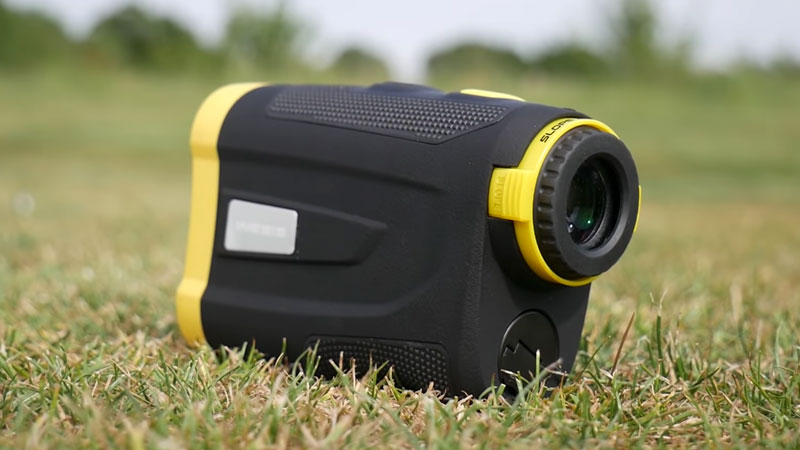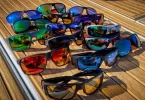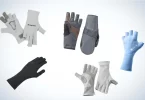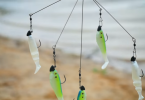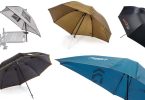The first step to making an accurate shot is determining how far away your target is from you. Hunters can take a more moral shot at wildlife if they are confident about this measurement. With only a quick glance through the glass, laser rangefinders might be the ideal tool to assist you in confirming your shooting distances.
You must learn how to use this practical hunting tool, though, in order to obtain those precise readings. By following the tips, discover how to utilize a rangefinder during the upcoming hunting season.
How does it work
Any seasoned hunter will tell you that you should get one, but in order to determine which one to buy, you need to understand how they operate and how to use one.
The simplest way to describe how a rangefinder operates is to press a single button. The laser rangefinder directs a laser beam directly at the target you are pointing at and then measures how long it takes the laser to return. There is a device inside that is referred to as a clock and can tell you how it took the laser beam to travel there and back to you.
The distance to your target is determined by the laser’s speed in relation to the length traveled. Along with the time, it can also tell you how far away the target is to the nearest plus or minus one yard. The greatest laser rangefinders have LCDs that give you all you need to know.
Each monocular rangefinder has a maximum range, frequently stated in the model name. But remember that this figure only reflects the widest possible range for reflected targets. This statistic is not as precise as it might seem because common game animals are not reflective. We suggest splitting the maximum range. This will help you better gauge the potential size of your next prize harvest.
How to use Rangefinder
The best part about rangefinders is how easy and simple it is to use them. They are accurate, concise, and small, especially laser rangefinders. Simply look through the monocular lens to view an enlarged image of your target. The model’s magnification can range from 5- to 7x power.
Press the “measure” button once you have searched the area and found your objective. A targeting reticle that looks like it belongs in a spotting scope will appear in your range of view. Push the measure button once more after you’ve located and lined your reticle with the target. The laser will then measure the distance your hunting rangefinder will fire. You can place an ethical and precise shot by using this measurement.
Knowing the appropriate length to achieve the ideal muzzle velocity for long-range shooting might also be useful. Your range reading can make choosing the proper pin for your compound bow much simpler during archery hunting. By using a rangefinder, you may firm up your aim.
In addition to all of these benefits, you can find excellent ones for less than $100. When looking at rangefinders on the market, you will likely require a range of 600 to 1,200 yards or possibly more if you buy one for your rifle. However, you should look for a bow and arrow with a maximum range of 800 yards if you plan to use one for hunting.
Always remember that soft things, like the skin of an animal or trees, can’t be measured from as far away as those that are hard or reflect light more easily, like a rock. Many rangefinder sets list the range for various targets so you can decide whether or not to purchase the device. If shooting is your specialty, there are additional models made specifically for it that will benefit you.
Effective Manufacturing
The greatest rangefinder devices will have a potent feature that will give you an accurate reading of the horizontal distance between you and the object you are aiming at. Many more consider your degree of slope or descent since, rather than being on the same level as your goal, they will directly affect how close or distant you are from it.
A rangefinder is necessary if you want to significantly enhance your hunting because it will let you know exactly where you need to be to hit your target and how much gravity is at work there.
Magnifying Feature
A type of magnification is included with every rangefinder so you can accurately range your target. Depending on the brand you bought, you can magnify it up to 6–8 times. Consider your rangefinder a fantastic pair of binoculars, but keep in mind that as you increase the magnification, your field of vision will decrease, making it more difficult to spot your target from a greater distance.
Lenses
You also need to know how the lenses function in order to operate a rangefinder effectively. Naturally, lenses draw light, and that light may enter your eye. Rangefinders have been treated with specific chemicals to assist you in calculating how much light strikes you, reducing any glare that could injure your eyes.
The picture will be brighter and cost more money the more coatings you have (as with a completely multi-coated rangefinder). Finding lenses that have at least been thoroughly coated is essential because they are so crucial.
Reasons to Use a Rangefinder
-
A rangefinder’s primary function is to tell you how far you are from your target.
-
Without worrying about scaring your prey, you may get a device with an entire one-mile range.
-
Your estimation abilities will get better. You’ll be better equipped to accurately estimate distances on the spot when that unexpected situation arises.
-
Rangefinders will show you the precise horizontal distance to the target, preventing you from aiming too high or low and missing a shot or losing an arrow.
-
Rangefinder makes it possible to predict whether you will strike your target or something else.
How to Get the Most of Your Rangefinder
-
On every hunt, you must bring an extra rangefinder battery.
-
They are designed to withstand any weather, whether hot, cold, dry, or rainy.
-
Always choose one with an angle adjustment.
-
Holding the range button in scan mode enables hunters to read current distance values quickly.
-
It’s important to understand how your rangefinder operates when ranging from various targets and in multiple environments.
-
Place your rangefinder in an easily accessible location that requires little movement to grasp.

